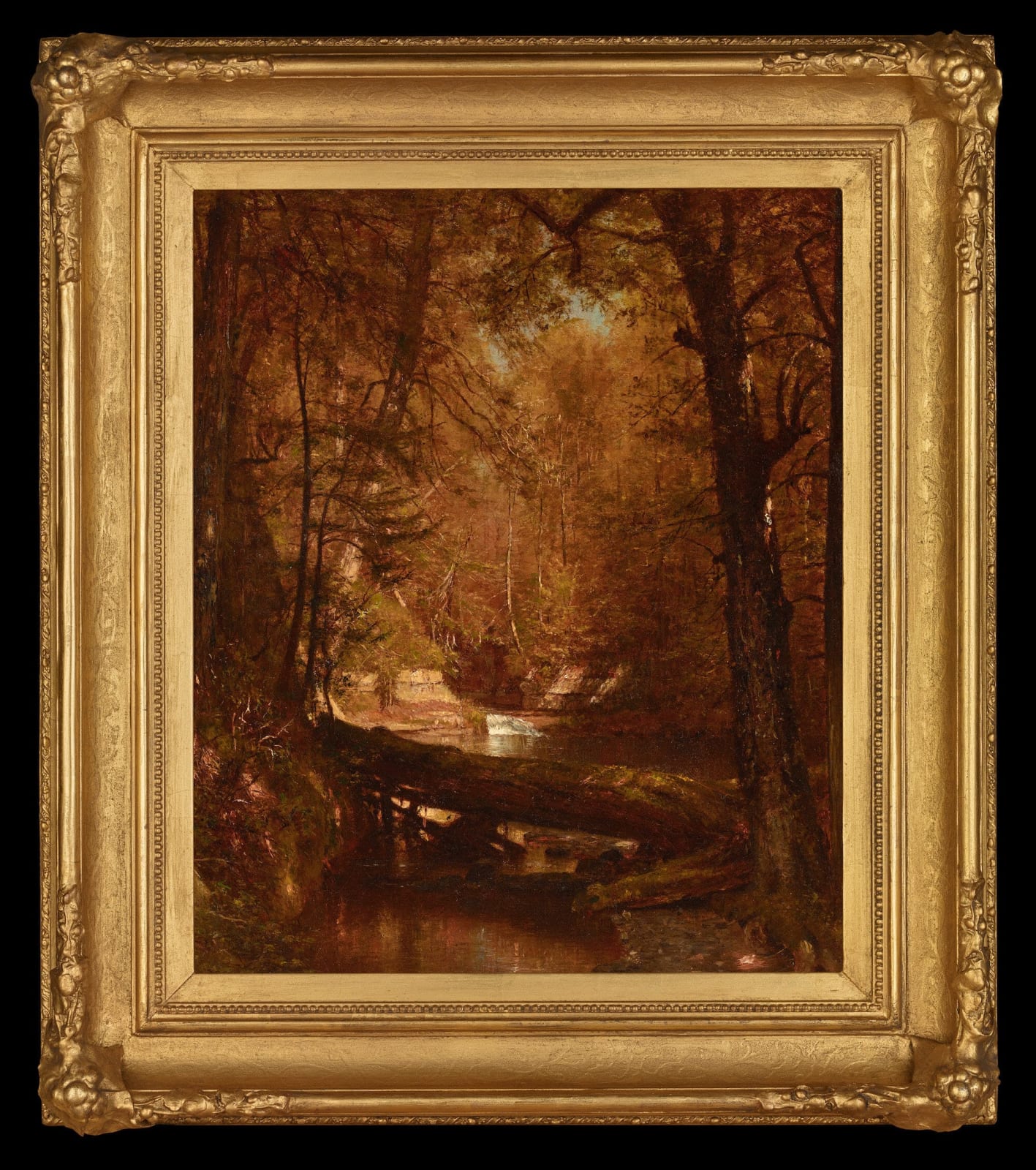Worthington Whittredge 1820-1910
Framed dimensions: 21 x 18 1/4 inches
The scenery Whittredge found in the Catskills surprised him greatly: “But how different was the scene before me from anything I had been looking at for many years! The forest was a mass of decaying logs and tangled brushwood, no peasants to pick up every vestige of fallen sticks to burn in their miserable huts, no well-ordered forests, nothing but the primitive woods with their solemn silence reigning everywhere. I think I can say that I was not the first or by any means the only painter of our country who has returned after a long visit abroad and not encountered the same difficulties in tackling home subjects.” Gradually, Whittredge came to term with his new subject, while still maintaining a firm grasp on the painting techniques he had learned in Europe. He started sending American scenes to the Academy exhibitions and received high praise. His style was at once meticulous in its delineation of the intricate forms of the forest and remarkably assured in its fluent brushwork. Whittredge’s years of study in Europe (especially in Dusseldorf) had taught him that the actual appearance of nature could be portrayed through means other than the literal, precise brushwork often favored by his colleagues. He knew that sometimes more could be achieved by suggesting, rather than simply mimicking, the facts of external reality. Whittredge had managed to bring a new vitality to the American landscape. None of his contemporaries would be so successful in melding the sophisticated lessons of European painting with the nationalist aspiration and religious associations that had become endowed in the American landscape itself.
This work is a smaller version of a painting of same title at The Metropolitan Museum of Art. Whittredge would paint the large version of a subject and then exhibit those works at the National Academy of Design in New York. When a client would see the painting on exhibit, they would sometimes ask Whittredge to paint a smaller version, and this painting is one of those examples. It is exactly one-half the size of the Met's painting, but otherwise it is exactly the same.
Likely a landscape in the Catskills, the painting reveals the influence of Asher B. Durand; however, Whittredge used a masterful blend of light and shadow, detail and painterliness to emphasize nature's expressive qualities, in particular what made the American landscape extraordinary.



